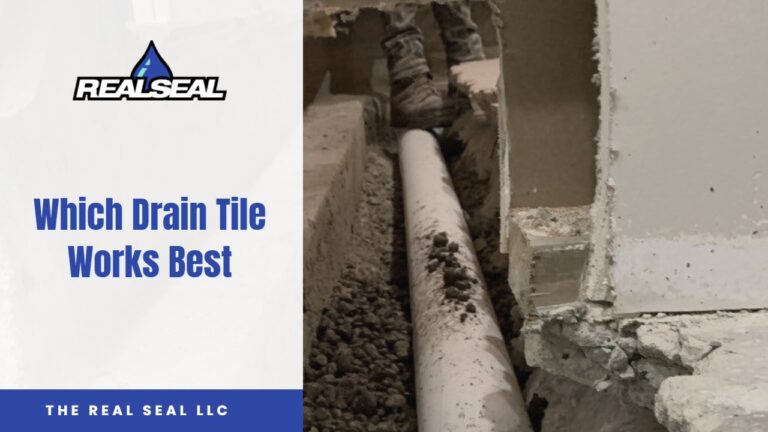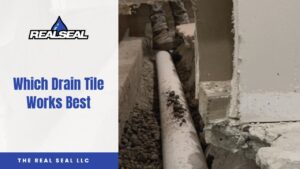Just like ear buds, there are many forms which Drain Tile can take. Different manufacturers and installers “tweak” the system ever-so-slightly so they can throw their name on it and call it “proprietary.” If you don’t like reading a whole lot, I’ll sum it up for you real quick. They’re all basically the same. Ear buds play music, and Drain Tile moves water.
Lost in Variety
Like our beloved dogs, all varieties of Drain Tile emerged from one source. While it is not as bold and elegant as the Wolf, Clay Farm Tile started it all. If you want to learn more about that, here’s the link to our blog that describes it. Why Is It Called Drain Tile?
Glad you’re back. Hope you learned some more “useless” information. Now for some useful information. There are basically two different types of Drain Tile:
- Next-to-Footer Systems
- On-top-of-Footer Systems
They say the first answer is usually correct. In this case they are spot-on. Drain Tile works by keeping the water level below your floor. If you put the Drain Tile on TOP of the footing of your foundation, that puts it right near at floor level. One big rain and *poof* there goes your beautiful basement. NEVER install an On-top-of-Footer System. EVER.
Everyone Has a Type
Just like there are different models of vehicle under their type, there are different models of Drain Tile. We will only speak of the ones that can benefit us, the Next-to-Footer Systems. Avoid the other at all costs.
Different companies make different Drain Tiles, but all for the same reason. To stand out from the rest. While they all work the same and accomplish the same thing, there are small differences.:
- 4” corrugated tube w/sock
- The most common material used. Found everywhere, and easy to install. When installed properly, lasts a lifetime. Tride and true.
- Plastic “Box” Systems
- There are a few different types of these systems, and they all move water. Difference here is that they are box-shaped as opposed to round.
- Vertical Bleed Systems
- Same as above, there are a few varieties here as well. These tend to be systems that are 2” wide at most, allowing for less material to be removed, which makes it more profitable for the contractor. They move far less water, however, making it a higher risk for the customer.
- Straight Gravel
- Yes, we have heard it. “All systems are useless, just put gravel down there and the water will drain.” When you hear someone say this, let them keep talking. They will give you loads of lessons on what NOT to do in life.
- Above-Floor Track Systems
- We all know it before it is even read. NO, these systems do nothing but move water above your floor. Cracks in the floor will not be stopped, major flooding not stopped. The only real use for these systems is in elevator shafts where it is not practical to break the concrete floor.
To sum it up, Drain Tile is good, but not every endless variety that is made up so someone can slap their logo on it. 4” diameter tubing, weather corrugated or solid, is the way to go. You’ll get the best bang for your buck and keep your basement secure.
Thanks for reading, and as always:
“Not Everything’s Better When Wet”






